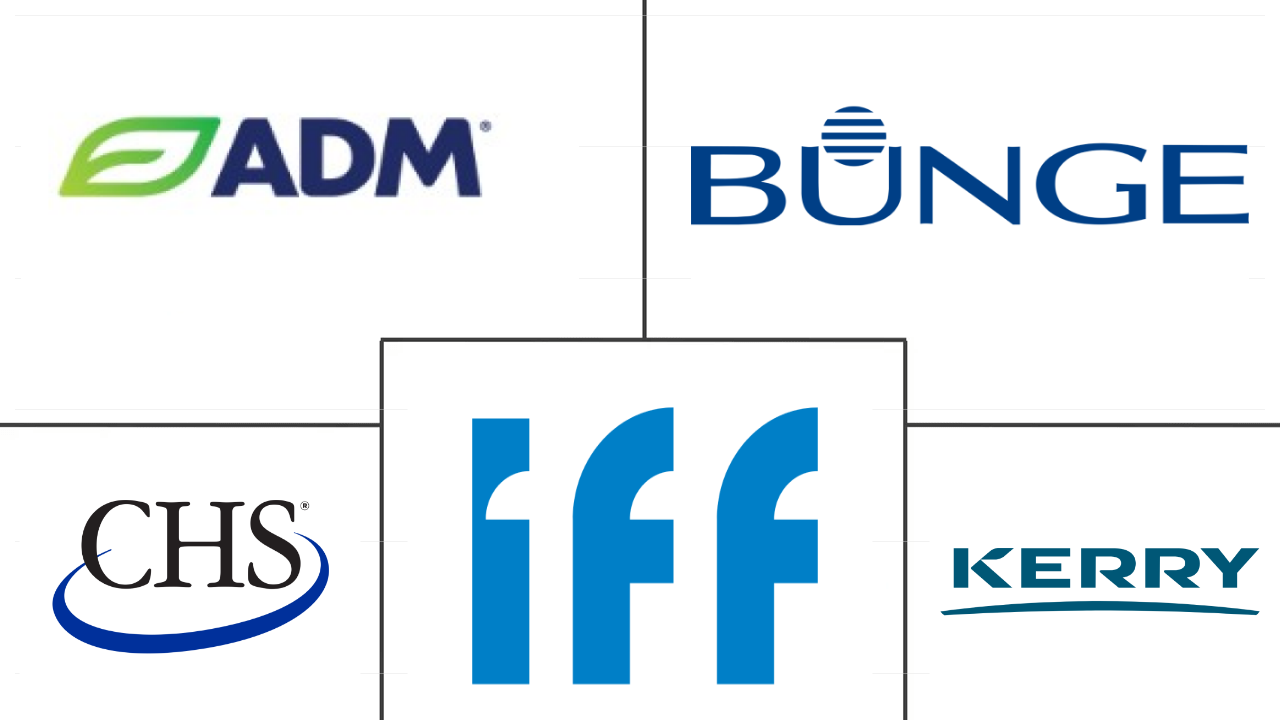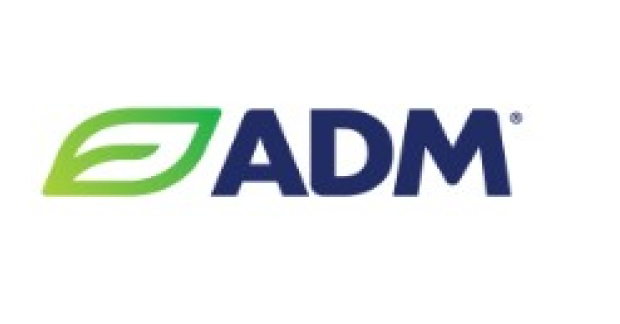Market Size of united states plant protein Industry
| Icons | Lable | Value |
|---|---|---|
|
|
Study Period | 2017 - 2029 |
|
|
Market Size (2024) | USD 4.21 Billion |
|
|
Market Size (2029) | USD 5.02 Billion |
|
|
Largest Share by End User | Food and Beverages |
|
|
CAGR (2024 - 2029) | 3.62 % |
|
|
Fastest Growing by End User | Supplements |
|
|
Market Concentration | Medium |
Major Players |
||

|
||
|
*Disclaimer: Major Players sorted in no particular order |
United States Plant Protein Market Analysis
The United States Plant Protein Market size is estimated at 4.21 billion USD in 2024, and is expected to reach 5.02 billion USD by 2029, growing at a CAGR of 3.62% during the forecast period (2024-2029).
4.21 Billion
Market Size in 2024 (USD)
5.02 Billion
Market Size in 2029 (USD)
5.43 %
CAGR (2017-2023)
3.62 %
CAGR (2024-2029)
Largest Market by Product Type
68.12 %
value share, Soy Protein, 2023
Soy proteins overpower all the plant protein types due to their high protein content, low viscosity, solubility, etc., catering to extensive applications in all the sectors.
Largest Market by End User
54.21 %
value share, Food and Beverages, 2023
The F&B segment leads the market, majorly driven by the bakery and dairy alternative sector. The wider functionalities of soy and wheat proteins further drive the F&B segment.
Fastest Growing Market by Product Type
5.28 %
Projected CAGR, Pea Protein, 2024-2029
Pea protein is projected to witness higher growth rate owing to increasing demand from meat substitutes end user segment and growing acceptance among food processors.
Fastest Growing Market by End User
6.49 %
Projected CAGR, Supplements, 2024-2029
The rising consumer focus on fitness and sports is anticipated to drive the segment. Among all, the preference for soy-based supplements further propells the segment's growth.
Leading Market Player
18.78 %
market share, Archer Daniels Midland Company, 2021

Archer Daniels Midland Company holds the largest market share. The company focuses on extending its consumer base, and it has collaborated with local clients for the same.
F&B and Animal feed together accounted for more than 50% of share in 2022, due to rising veganism coupled with growing preference for plant-based foods as a sustainable alternative.
- The food and beverage segment witnessed the highest demand, followed by animal feed, in 2022. The food and beverages segment grew, registering a CAGR of 4.11% by value during the study period. The rising utilization of plant proteins in animal feed and cosmetics has driven growth in recent years. The high usage of protein types in feed composition, such as soy, wheat, and pea drives the animal feed market. The increase in demand for plant proteins in dairy and meat alternatives will drive the segment during the forecast period.
- The food and beverages sector applications drive the demand for plant proteins in the country, and they registered a volume share of 54.2% in 2022. This was majorly due to the increasing preference for plant-based foods as a sustainable alternative. The meat alternative products sub-segment is witnessing huge demand from food and beverages applications, with a share of 38.03% by volume in 2022, followed by the dairy alternative products sub-segment. The rapid expansion of plant-based meats, which are now widely available in grocery stores and offered in fast-food restaurants, makes these diets more convenient and easier to maintain.
- Supplements are anticipated to be the fastest-growing sector in the market, registering a CAGR of 6.30% during the forecast period, owing to their immense health benefits. Plant protein powder is rich in fiber and is more nutrient dense than dairy protein powder, making it a suitable alternative to casein and whey powder. Plant proteins, such as rice and peas, are gaining popularity for being hypoallergenic and a nutritious alternative for people suffering from lactose intolerance. In 2022, 36% of the US population was lactose-intolerant people, leading to high demand for alternative proteins.
United States Plant Protein Industry Segmentation
Hemp Protein, Pea Protein, Potato Protein, Rice Protein, Soy Protein, Wheat Protein are covered as segments by Protein Type. Animal Feed, Food and Beverages, Personal Care and Cosmetics, Supplements are covered as segments by End User.
- The food and beverage segment witnessed the highest demand, followed by animal feed, in 2022. The food and beverages segment grew, registering a CAGR of 4.11% by value during the study period. The rising utilization of plant proteins in animal feed and cosmetics has driven growth in recent years. The high usage of protein types in feed composition, such as soy, wheat, and pea drives the animal feed market. The increase in demand for plant proteins in dairy and meat alternatives will drive the segment during the forecast period.
- The food and beverages sector applications drive the demand for plant proteins in the country, and they registered a volume share of 54.2% in 2022. This was majorly due to the increasing preference for plant-based foods as a sustainable alternative. The meat alternative products sub-segment is witnessing huge demand from food and beverages applications, with a share of 38.03% by volume in 2022, followed by the dairy alternative products sub-segment. The rapid expansion of plant-based meats, which are now widely available in grocery stores and offered in fast-food restaurants, makes these diets more convenient and easier to maintain.
- Supplements are anticipated to be the fastest-growing sector in the market, registering a CAGR of 6.30% during the forecast period, owing to their immense health benefits. Plant protein powder is rich in fiber and is more nutrient dense than dairy protein powder, making it a suitable alternative to casein and whey powder. Plant proteins, such as rice and peas, are gaining popularity for being hypoallergenic and a nutritious alternative for people suffering from lactose intolerance. In 2022, 36% of the US population was lactose-intolerant people, leading to high demand for alternative proteins.
| Protein Type | |
| Hemp Protein | |
| Pea Protein | |
| Potato Protein | |
| Rice Protein | |
| Soy Protein | |
| Wheat Protein | |
| Other Plant Protein |
| End User | |||||||||||||
| Animal Feed | |||||||||||||
| |||||||||||||
| Personal Care and Cosmetics | |||||||||||||
|
United States Plant Protein Market Size Summary
The United States plant protein market is experiencing significant growth, driven by increasing consumer demand for plant-based foods and alternatives. The food and beverage sector is the primary driver of this market, with a notable shift towards plant-based diets due to sustainability concerns and health benefits. The demand for plant proteins in animal feed and cosmetics is also contributing to market expansion. The rise in popularity of meat and dairy alternatives, supported by the availability of plant-based meats in grocery stores and fast-food restaurants, is further propelling the market. The market is characterized by a growing interest in hypoallergenic and nutrient-dense alternatives, such as rice and pea proteins, which cater to consumers with lactose intolerance and those seeking vegan options.
The market landscape is moderately consolidated, with major players like Archer Daniels Midland Company, Bunge Limited, and CHS Inc. dominating the scene. The production of key raw materials such as soybeans, wheat, and rice in the United States supports the availability of plant protein ingredients. Innovations and investments in plant-based protein products, such as the introduction of novel rice proteins and the expansion of texturized protein facilities, are enhancing the market's growth prospects. The increasing per capita consumption of plant proteins, driven by a rise in flexitarian and vegan diets, underscores the shifting consumer preferences towards plant-based diets, further solidifying the market's trajectory.
United States Plant Protein Market Size - Table of Contents
-
1. MARKET SEGMENTATION (includes market size in Value in USD and Volume, Forecasts up to 2029 and analysis of growth prospects)
-
1.1 Protein Type
-
1.1.1 Hemp Protein
-
1.1.2 Pea Protein
-
1.1.3 Potato Protein
-
1.1.4 Rice Protein
-
1.1.5 Soy Protein
-
1.1.6 Wheat Protein
-
1.1.7 Other Plant Protein
-
-
1.2 End User
-
1.2.1 Animal Feed
-
1.2.2 Food and Beverages
-
1.2.2.1 By Sub End User
-
1.2.2.1.1 Bakery
-
1.2.2.1.2 Beverages
-
1.2.2.1.3 Breakfast Cereals
-
1.2.2.1.4 Condiments/Sauces
-
1.2.2.1.5 Confectionery
-
1.2.2.1.6 Dairy and Dairy Alternative Products
-
1.2.2.1.7 Meat/Poultry/Seafood and Meat Alternative Products
-
1.2.2.1.8 RTE/RTC Food Products
-
1.2.2.1.9 Snacks
-
-
-
1.2.3 Personal Care and Cosmetics
-
1.2.4 Supplements
-
1.2.4.1 By Sub End User
-
1.2.4.1.1 Baby Food and Infant Formula
-
1.2.4.1.2 Elderly Nutrition and Medical Nutrition
-
1.2.4.1.3 Sport/Performance Nutrition
-
-
-
-
United States Plant Protein Market Size FAQs
How big is the United States Plant Protein Market?
The United States Plant Protein Market size is expected to reach USD 4.21 billion in 2024 and grow at a CAGR of 3.62% to reach USD 5.02 billion by 2029.
What is the current United States Plant Protein Market size?
In 2024, the United States Plant Protein Market size is expected to reach USD 4.21 billion.

